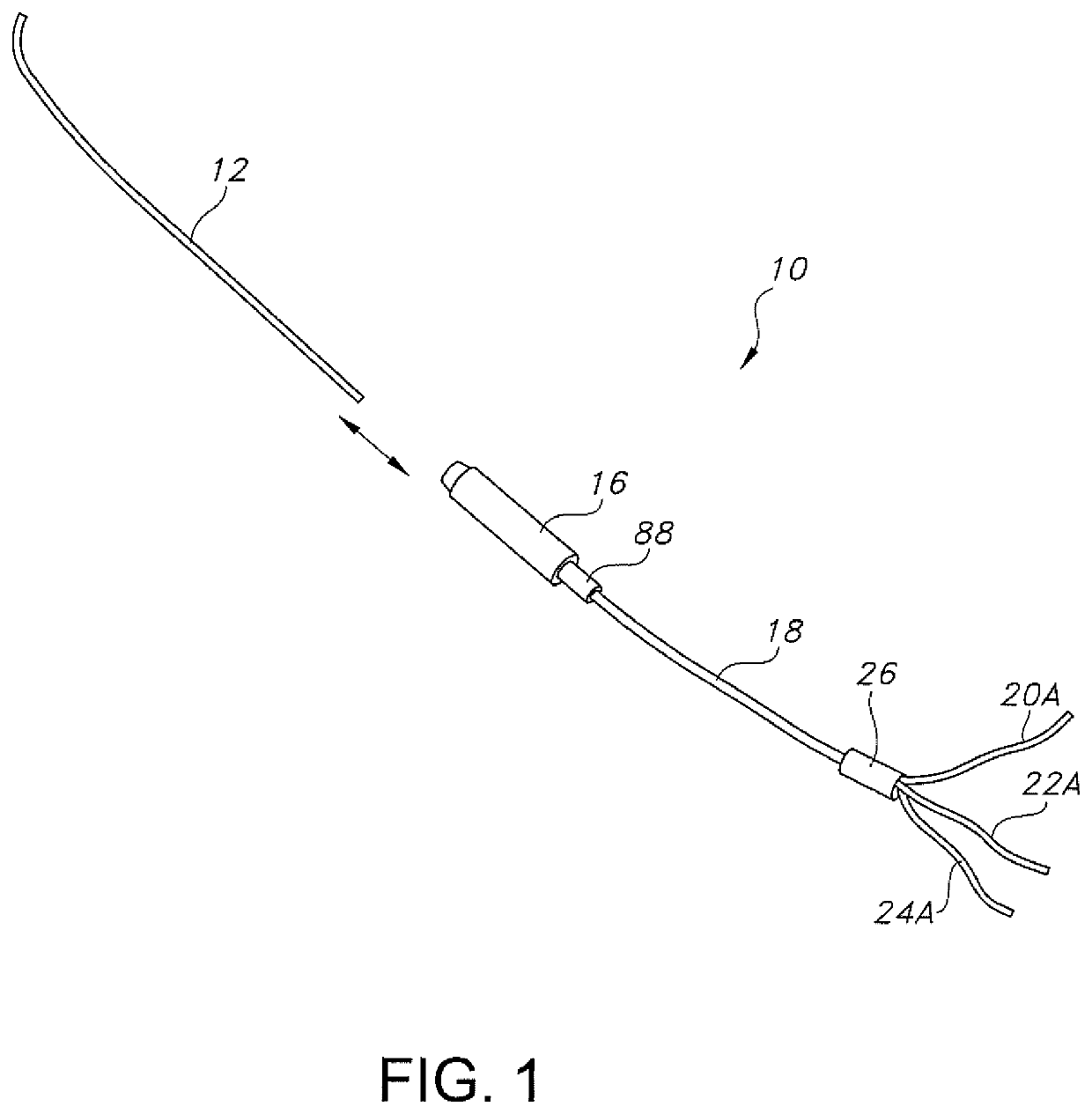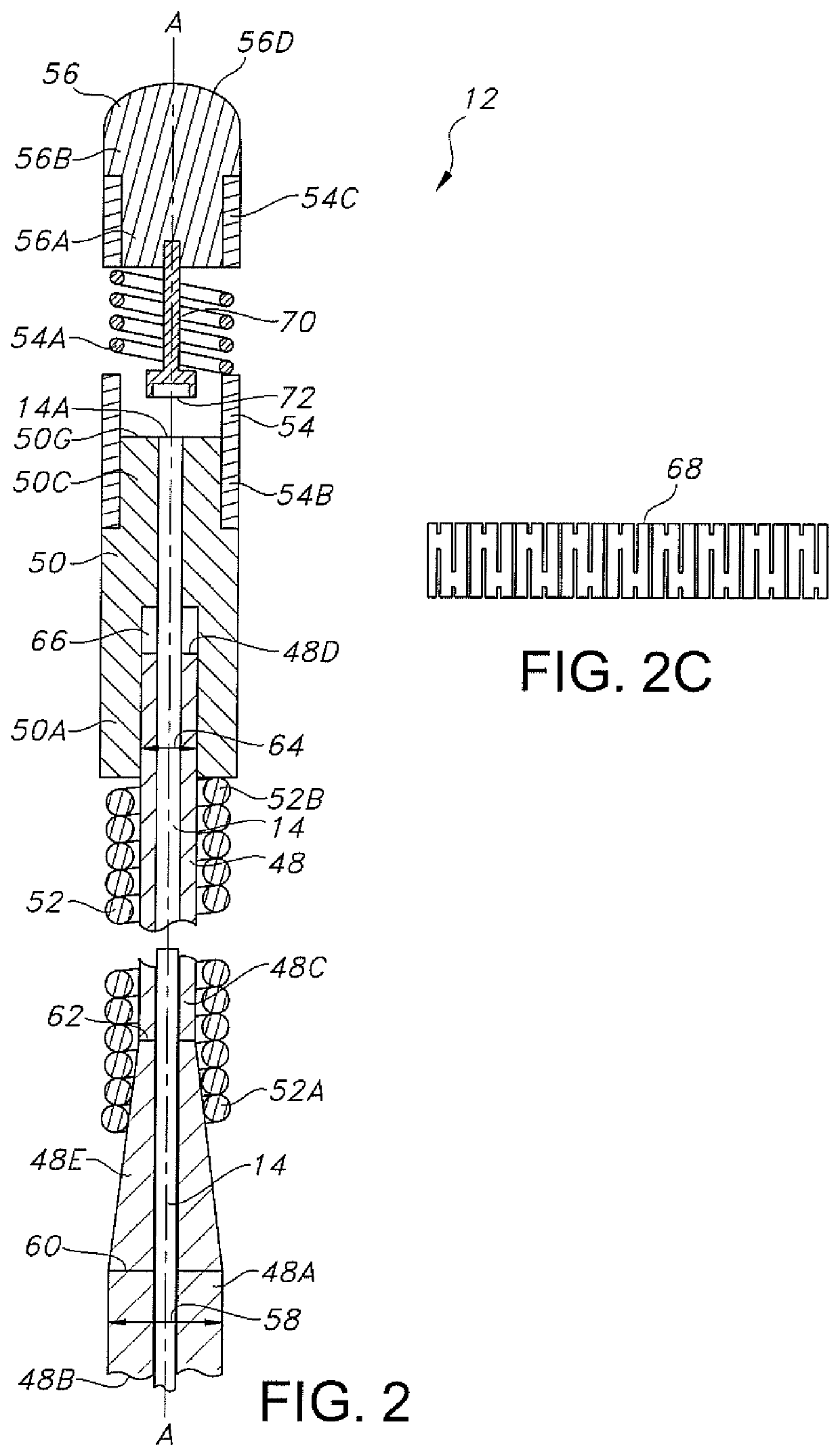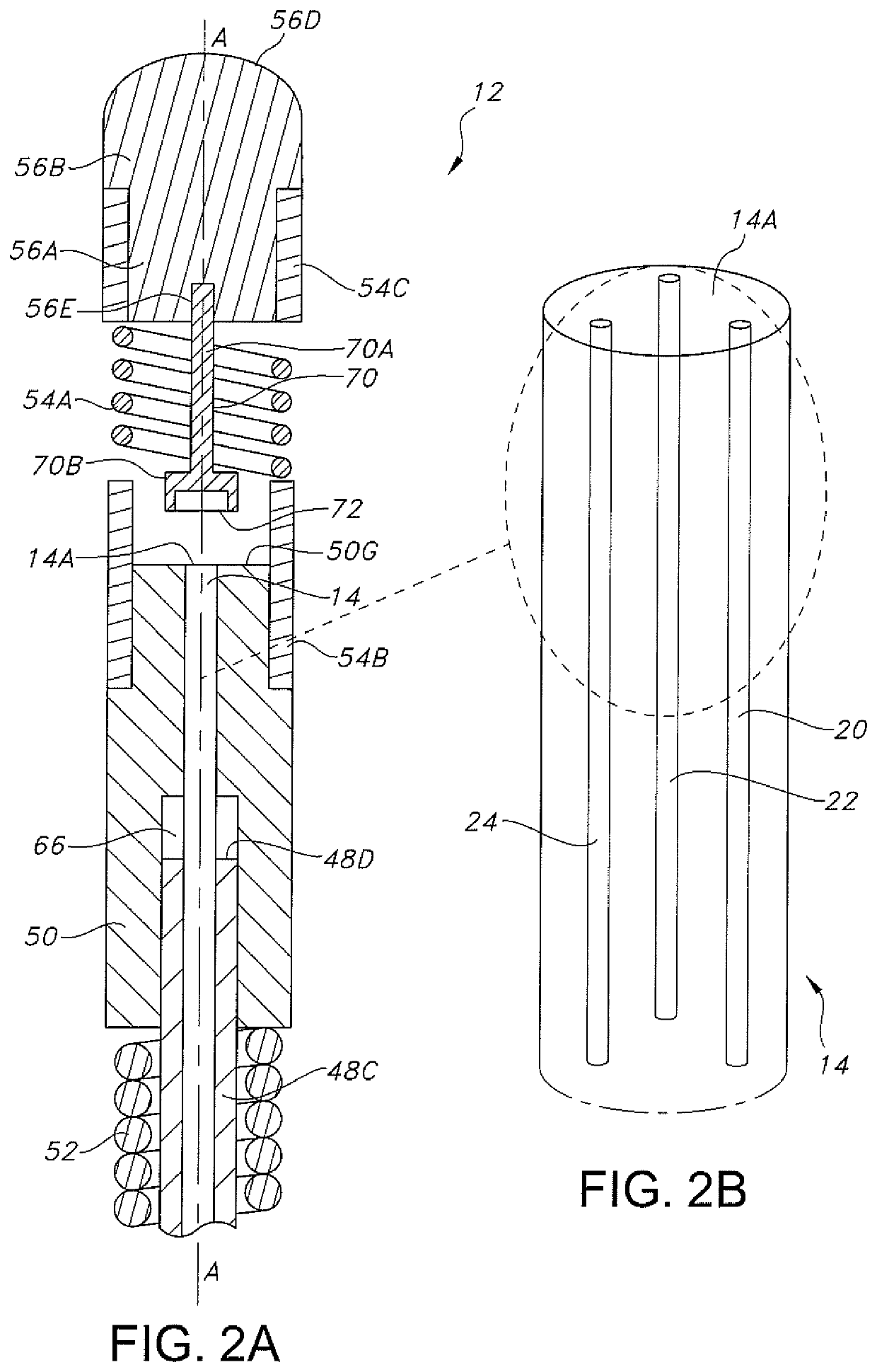Guidewire having a fiber optic force sensor with a mirror having a patterned reflectance
a fiber optic force sensor and fiber optic technology, applied in the field of medical devices, can solve the problems of lack of tactile perception, limb impairment, heart failure, etc., and achieve the effects of reducing the risk of damaging vasculature tissue, reducing contrast fluid and x-ray use, and speeding up medical procedures
- Summary
- Abstract
- Description
- Claims
- Application Information
AI Technical Summary
Benefits of technology
Problems solved by technology
Method used
Image
Examples
Embodiment Construction
[0042]Turning now to the drawings, FIG. 1 is a schematic of a guidewire system 10 according to the present invention. The guidewire system 10 comprises a guidewire 12 supporting an optical fiber 14 (FIGS. 2, 2A, 2B, 3 to 7, 9, 9A, 9B, 12, 12A, 12B and 13). The guidewire and optical fiber are detachably connectable to an optical connector 16 serving as a handle. An external optical cable 18 is connected to the optical connector 16 opposite the guidewire 12. The guidewire 12 has a length ranging from about 50 cm to about 350 cm.
[0043]As will be described in detail hereinafter, in one embodiment the optical fiber 14 supported by the guidewire 12 has three fiber cores 20, 22 and 24 (FIG. 2B). The external optical cable 18 has an external optical fiber 18A (FIGS. 6 and 7) comprising three external fiber cores 20A, 22A and 24A (FIGS. 1 and 8) that are optically connected through the optical connector 16 to the respective fiber cores 20, 22 and 24 of the guidewire optical fiber 14. A proxi...
PUM
| Property | Measurement | Unit |
|---|---|---|
| length | aaaaa | aaaaa |
| outer diameter | aaaaa | aaaaa |
| outer diameter | aaaaa | aaaaa |
Abstract
Description
Claims
Application Information
 Login to View More
Login to View More - R&D
- Intellectual Property
- Life Sciences
- Materials
- Tech Scout
- Unparalleled Data Quality
- Higher Quality Content
- 60% Fewer Hallucinations
Browse by: Latest US Patents, China's latest patents, Technical Efficacy Thesaurus, Application Domain, Technology Topic, Popular Technical Reports.
© 2025 PatSnap. All rights reserved.Legal|Privacy policy|Modern Slavery Act Transparency Statement|Sitemap|About US| Contact US: help@patsnap.com



